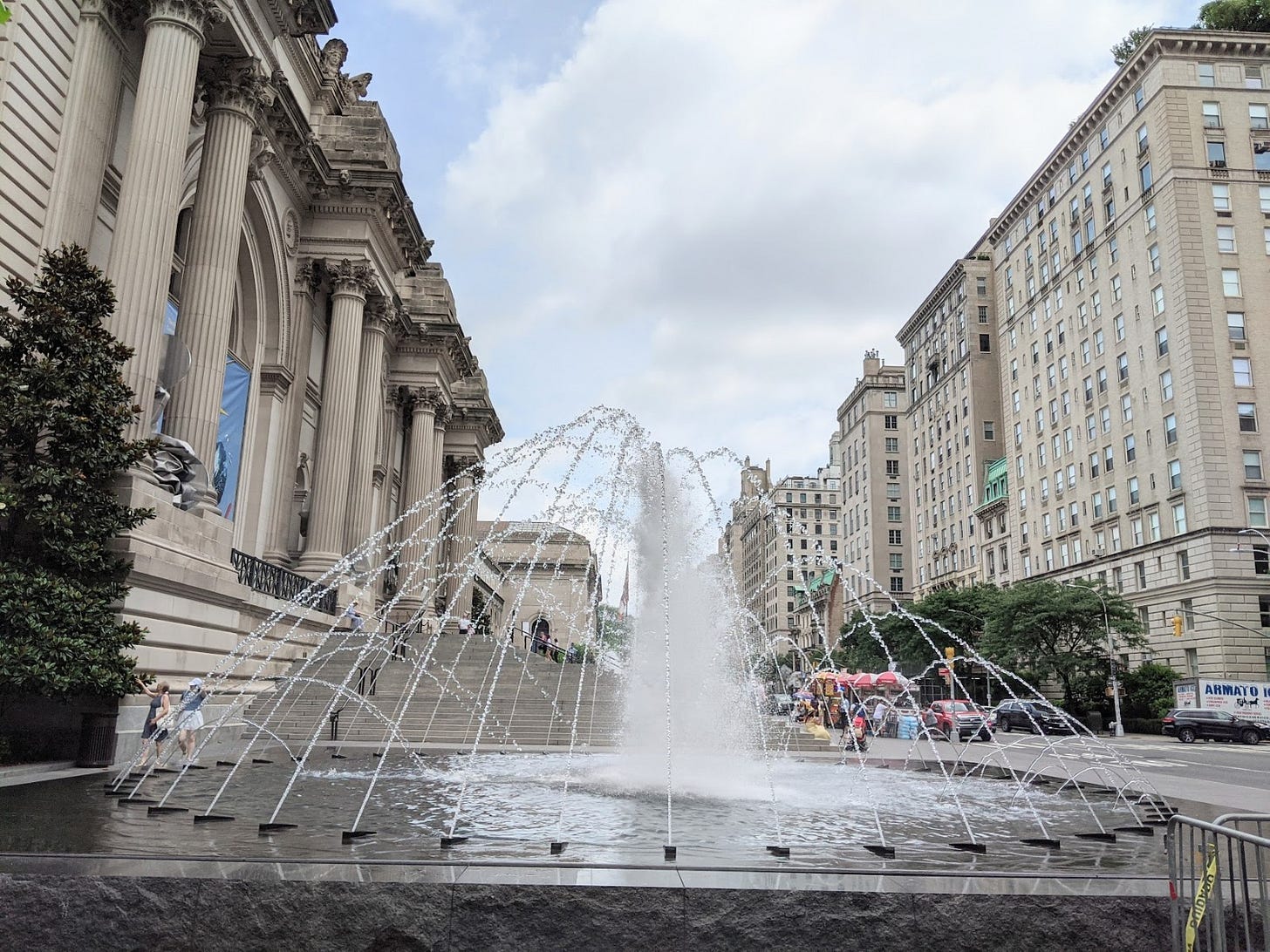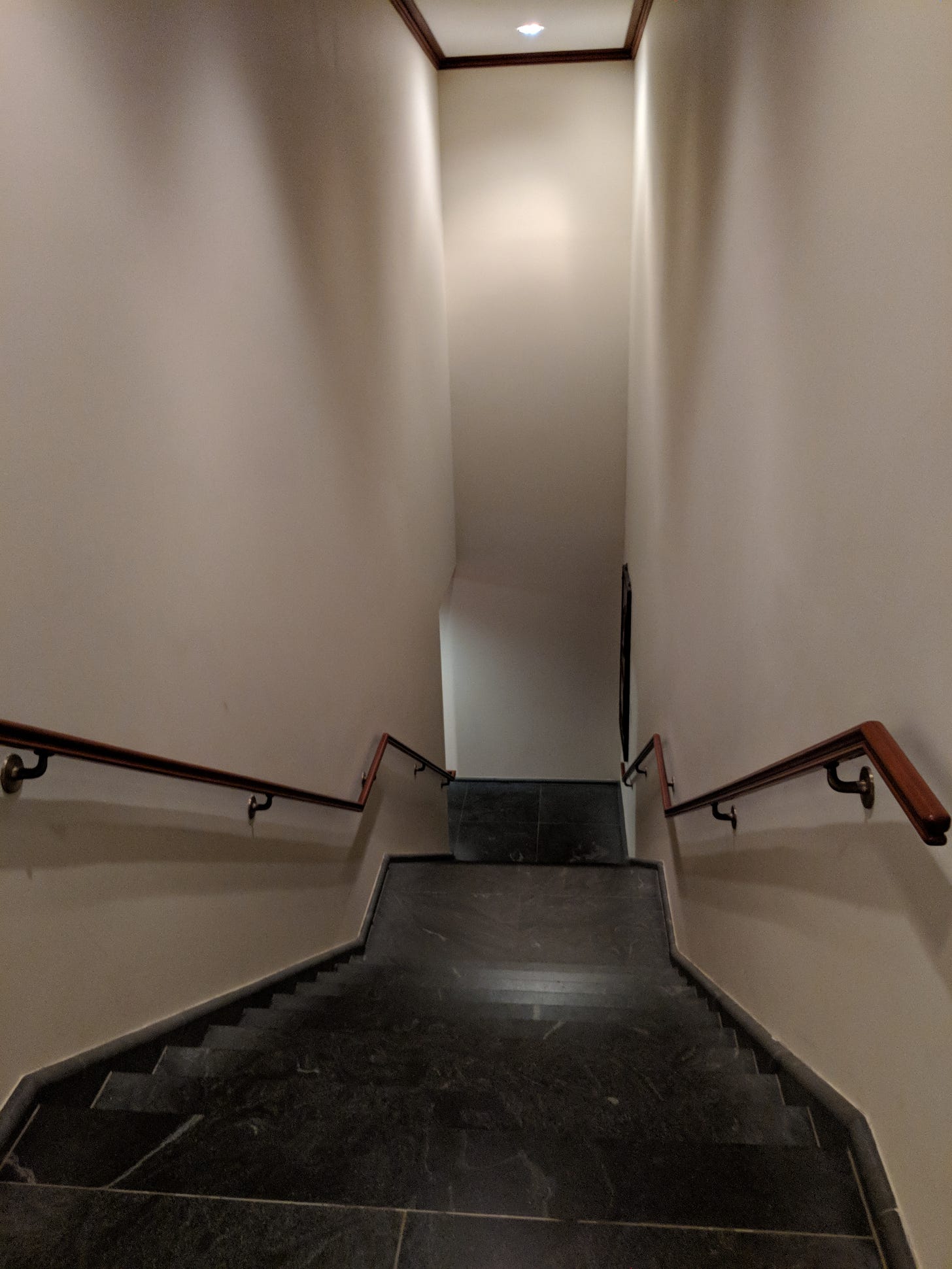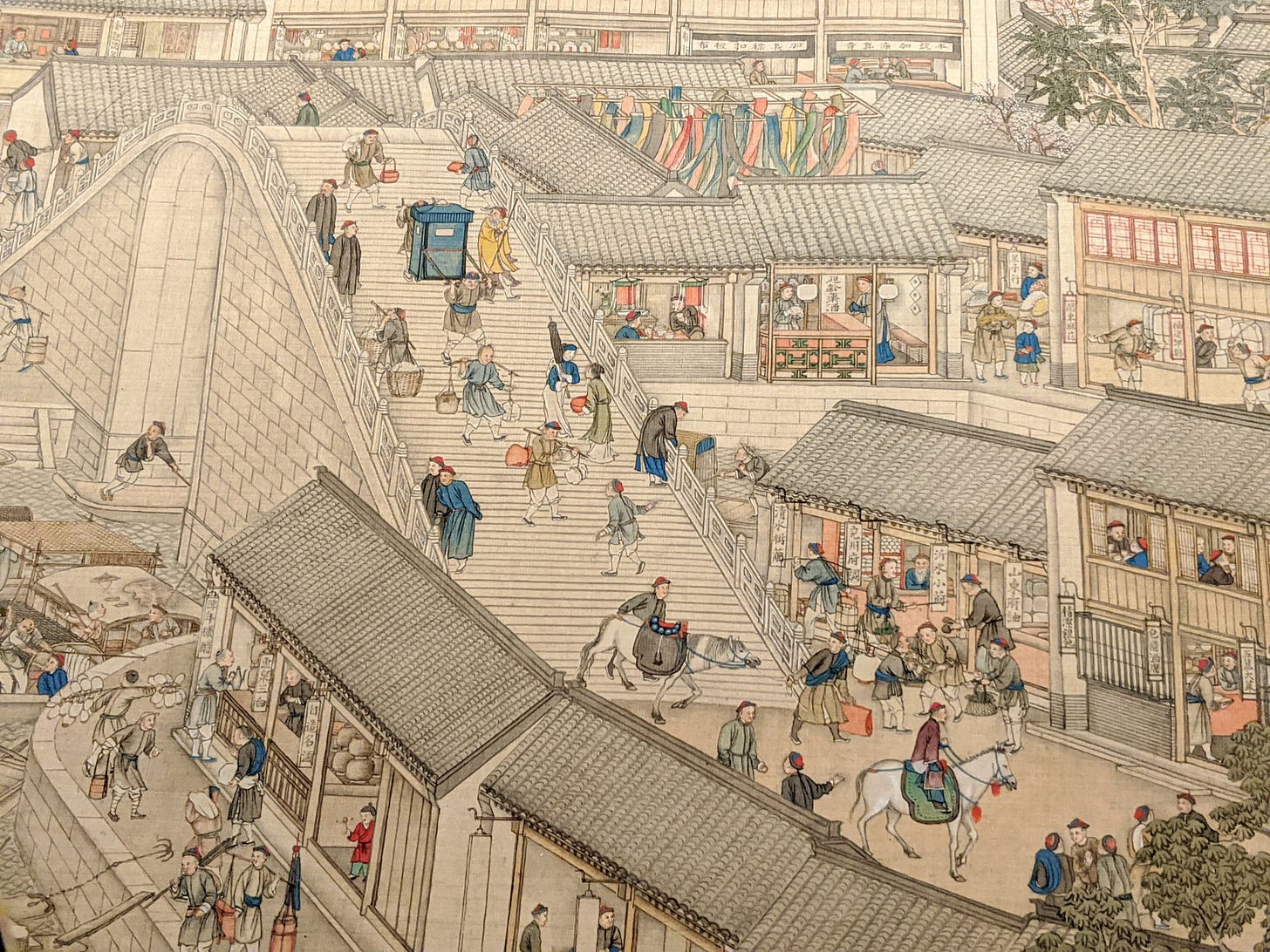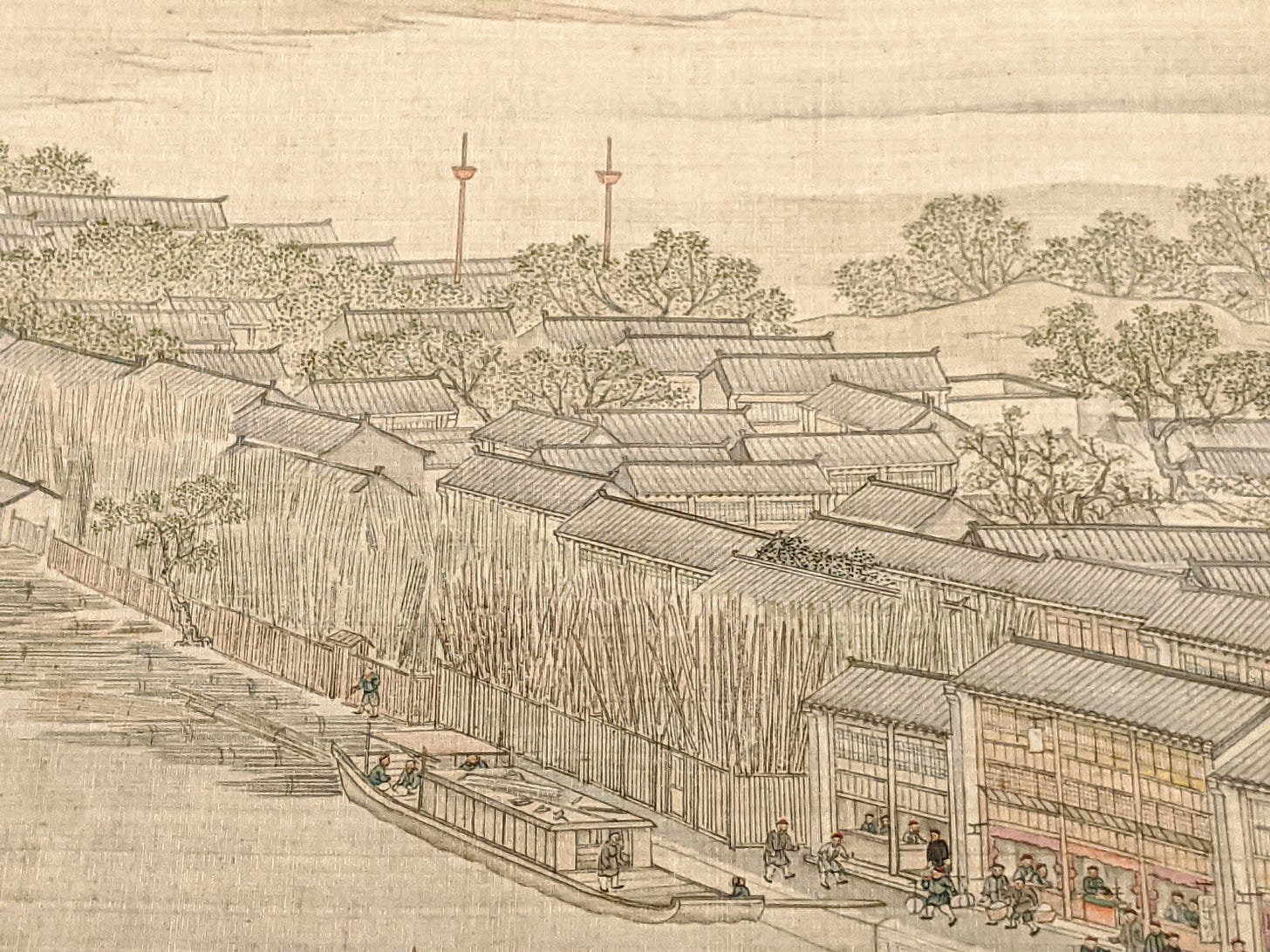The Metropolitan Museum of Art in New York City contains wonders from almost every corner of the earth. While the Asian art is closest to my heart, getting lost in The Met’s maze of breathtaking galleries spread across four expansive blocks along Fifth Avenue on the eastern edge of Central Park is a delight. This issue of Andrew Singer Talks About China features two pieces of art from the Asian wing of the Museum and how their story now connects with mine.
The Emperor’s Jade almost Meets the Emperor’s Southern Inspection Tour at The Met
Descending the steep, unforgiving stairs from the tiny third floor rooms at the far northeast corner of the Metropolitan Museum of Art, my disappointment shortly turned to serendipitous excitement as we wound our way into a nondescript second-floor room in another portion of the Asian wing.1
It was the second day of our two-day visit last month, a return delayed by more than 1.5 years by Covid-19. On my first of several visits to The Met in 2019, something special happened. I had traveled here to see several, small, Leonardo de Vinci pen and ink drawings as well as an exhibition on the landscape painting tradition in Chinese art. Yet, when I found my way to that seriously out-of-the-way staircase, I climbed them to discover a world of jade that sparked a new journey.
The Heber Bishop jade collection was the preeminent collection in the world at the turn of the twentieth century. While only a small fraction of the 1000+ pieces was on display in early 2019, it was enough to capture my attention. A potential storyline for a novel I had not known I wanted to write unexpectedly popped into my head as I stared through the glass at a particular piece of ancient carved jade nestled on a florid wooden stand.
I returned a few more times throughout 2019 and then finally walked up those stairs again with anticipation less than one month ago. Imagine my surprise when I discovered that many of the pieces, including the One that I have been researching for more than two years, were no longer there. It couldn’t be. I felt…not right.
Now this is where serendipity took over and I once again have to thank my Chinese professor of more than thirty years ago for her advice, “Don’t expect anything and you’ll be pleasantly surprised.”
Another part of my painfully-slow-work-in-process involves the Qianlong Emperor and one of his six, eighteenth-century Southern Inspection Tours. These months-long, extravagant (read: expensive) tours to the Yangtse River delta followed in the path of his grandfather, the Kangxi Emperor, and were designed to bring the majesty and power of the Imperial Court to the Chinese heartland in the southern part of the country. The Emperor met with officials, inspected flood-control installations and other important infrastructure of the state, composed poems, and spread his largesse and presence across his realm.
A set of twelve, monumental handscrolls documenting the first such trip of 1751 was completed in 1770 by Xu Yang. The Met owns two of the scrolls (Nos. 4 and 6). I have wanted to see them in person (online is nice, but not the same). As it happened, Scroll Four was on exhibition until January 2019, less than one month before my first visit that year. Scroll Six, which documents the Emperor’s trip to and arrival at the famous city of Suzhou (乾隆南巡圖 -第六卷﹕大運河至蘇州), was previously last on view in 2016.
That is, until early in the Covid year of 2020. And the room in which it was again displayed is what I walked into on June 26th as we made our way through the Museum. As it happened, it was the second-to-last-day of this now recently-ended, year-and-a-half-long exhibition. My heart leapt when I realized what I was looking at. Here was the Qianlong Emperor traveling through his realm and entering Suzhou on horseback.
The final ink and color on silk scroll is more than two feet tall and sixty-five long. From first draft brush stroke on paper to the final in silk, the process took six years of dedicated work by the painter and his assistants. The detail, the colors, and the care put into this creation are incredible. The faces of the Emperor, his entourage, and the officials waiting to greet him are each full of character and emotion. The horses march proudly with their mounts. Eighteenth century Chinese society (yes, it might be idealized, but still…) comes to life as the story unfolds.
Serendipity indeed.
Close-ups from the Southern Inspection Tour Handscroll (Scroll Six)
From bustling waterways and thronged city streets to quiet courtyards and pastoral religious mountaintops. From officials and scholars to merchants and ordinary citizens. From boats and horses to sedan chairs and feet. The activity and life of Suzhou and its environs are presented to soak in and experience. Here are eight scenes from Scroll Six.
One More Thought
One of the reasons that Scroll Six of The Qianlong Emperor’s Southern Inspection Tour: Entering Suzhou along the Grand Canal, is so vibrant and well preserved after 250 years is that it has rarely been displayed as we do in today’s museums. No, handscrolls were not stretched out and placed for all to see. They were kept rolled and stored away to be brought out to view as desired. They were then not opened completely, but rather unrolled scene by scene to allow the viewer to experience the passing landscape as it moved from water to road, past fields and mountains, winding ever closer to the city walls and the frenetic energy contained within.
Follow Andrew Singer on Social Media: Instagram, Facebook, Twitter.
All photographs in this Issue are by the author.


















